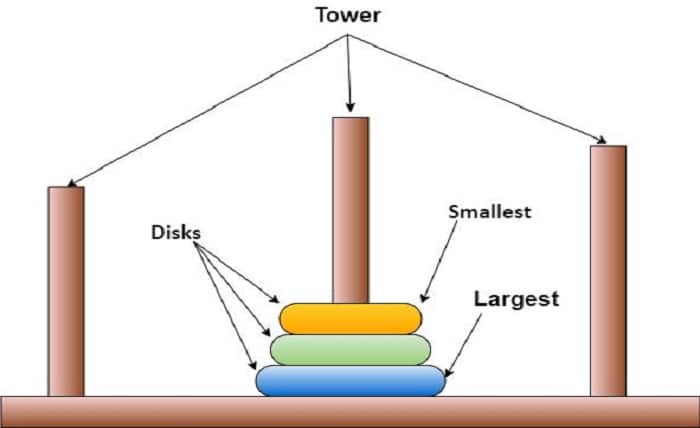Towers of Hanoi in C: A Comprehensive Guide

In the world of computer science and programming, the Towers of Hanoi puzzle has gained significant popularity. This mathematical puzzle is not only intriguing but also serves as an excellent exercise to enhance problem-solving skills. In this article, we will delve into the concept of the Towers of Hanoi and explore how to implement it in the C programming language. So, let’s dive right in!
What is the Towers of Hanoi Puzzle?
The Towers of Hanoi puzzle is a mathematical game that consists of three pegs and a set of disks of different sizes. The objective of the puzzle is to move all the disks from one peg to another, following specific rules. The puzzle’s initial configuration has all the disks stacked in ascending order of size on one peg, with the smallest disk at the top and the largest disk at the bottom.
The Rules
To successfully solve the Towers of Hanoi puzzle, one must adhere to the following rules:
Rule 1: Only One Disk Can Be Moved at a Time
Throughout the puzzle, you are only allowed to move one disk at a time from any given peg to another peg.
Rule 2: A Larger Disk Cannot be Placed on Top of a Smaller Disk
It is crucial to maintain the order of disk sizes during the puzzle. A larger disk cannot be placed on top of a smaller disk at any point.
Recursive Solution Approach
The most elegant and efficient way to solve the Towers of Hanoi puzzle is by using a recursive approach. The recursive solution employs the divide-and-conquer strategy, breaking down the problem into smaller subproblems until the base case is reached.
Step-by-Step Walkthrough
Now let’s walk through the step-by-step process of implementing the Towers of Hanoi algorithm in C:
Initializing the Number of Disks
To begin, you need to define the number of disks you want to use for the puzzle. In our example, we have chosen 3 disks.
Defining the Function for Tower of Hanoi
Next, we define a function called towerOfHanoi that takes four parameters: n (the number of disks), source (the source peg), auxiliary (the auxiliary peg), and destination (the destination peg). Inside the function, we use recursive calls to solve the subproblems.
Testing the Function with Example Input
In the main function, we call the towerOfHanoi function with the chosen number of disks and the names of the pegs. Running the program will display the step-by-step moves required to solve the puzzle.
Analyzing the Complexity
The Towers of Hanoi algorithm has a time complexity of O(2^n), where n represents the number of disks. As the number of disks increases, the time taken to solve the puzzle grows exponentially.
Benefits of Implementing Towers of Hanoi in C
Implementing the Towers of Hanoi puzzle in C offers several benefits, such as:
- Enhancing problem-solving skills
- Understanding recursion and its application
- Strengthening programming logic and algorithmic thinking
- Gaining proficiency in the C programming language
Practical Applications
While the Towers of Hanoi puzzle itself may not have direct real-world applications, understanding its concepts and implementing it in C can improve your overall programming skills. The recursive nature of the solution can be applied to various problem-solving scenarios.
Read more about: home-workify
Conclusion
The Towers of Hanoi puzzle serves as a captivating challenge for programmers. By implementing the puzzle in C using a recursive approach, you can sharpen your problem-solving abilities and gain a deeper understanding of the C programming language. So, why not give it a try and expand your programming horizons today?
Also read about Choice home warranty



